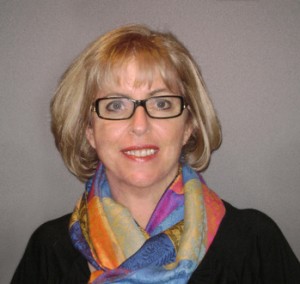Birdshot Uveitis Society has a growing number of members from Canada and the United States. Dagmar Cole, who lives in the US and has had Birdshot for many years, runs an on-line support forum and we at BUS have got to know many of the people who communicate on this support forum. Recently, Karen, who is active on that forum has joined BUS. If you have used Dagmar’s forum, you will know her as MOMDDS. Karen has a background in dentistry, but she has now set up a counselling service for people with low vision. Karen also acts as a catalyst for a Birdshot group in the Toronto area. She says “it is a very casual affair. I think the more we “birdies” communicate with each other, the better chance we have of accessing ideas, research and positivity.” So if you live in Toronto and have Birdshot Chorioretinopathy and you feel in need a bit of support, Karen and the group are there to help.
 We thought that BUS members would like to read about Karen’s story. This is what Karen says on her website:
We thought that BUS members would like to read about Karen’s story. This is what Karen says on her website:
“I thought I needed a new prescription for my glasses…
In March 2008 I went to the optometrist for new glasses. She couldn’t make my vision 20/20, no matter what lenses she tried. She then dilated my eyes and ….the insides were full of debris!!! So began my journey…
Maybe I was in denial about having a serious problem, but I did not book an appointment immediately. My physician warned me I could possibly lose my vision from a potentially serious problem. That is what it turned out to be – Birdshot Choroidoretinopathy- a rare, potentially blinding disease.
Unfortunately for my uveitis specialist, he had me as his last patient of the day. I had done a lot of research on the disease when I was diagnosed and printed it out in order to ask questions. He took my research papers away, informing me he would give me all the information I would need, which he did. Then for the next hour talked, listened, got frustrated with me, yet clearly outlined the information I would need as I became an eye-disease patient, one who could eventually be very impaired.
The experience was traumatic for me and my family. My future as a working dentist was uncertain, and I was terrified at facing a future with visual impairment. My vision continued to deteriorate over the next 6 months. I needed to stop working. It would take one and a half years to have my vision stabilized with medication and injections, although it never returned to normal.
My challenge was to control my anxiety, depression and panic. No one had heard of my disease, and it proved to be a very rare one. My friends and family tried to support me. How could these people understand what I was going through? Having a rare disease, impaired vision and a massive life change made me feel alone and terrified.
I’ve never been a quitter, my personal motto is “just do it!” Thus my Birdshot journey began. I started researching everything I could learn about the disease and its treatment, used the Internet to find others who had it and created a Toronto online group. I looked for emotional support specifically for people who were developing a visual impairment… it didn’t appear to exist in that form.
I was entering a new phase of life. After speaking to professionals about the need for emotional support in the vision-impaired community, I headed to college for a post-graduate diploma. I graduated as a Social Service Worker, gaining concrete knowledge and experience in counselling skills, advocacy, case management and finding resources in the community. These refined the skills I already had from decades in the health care field and extensive volunteer work.
No one should feel alone during such a traumatic time of change and uncertainty. I therefore decided to be a catalyst for positive change in others, and Vision Support Network Ltd. was founded.”
Please get in touch with us if you want to have your contact details passed on to the Toronto support group.
Annie and Rea